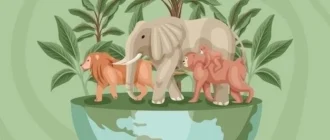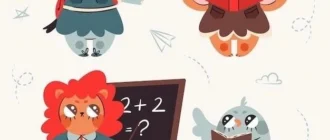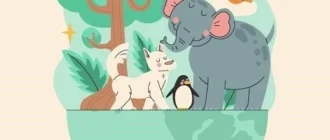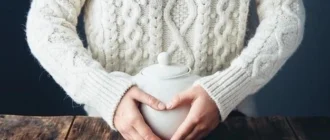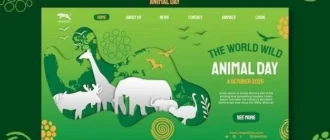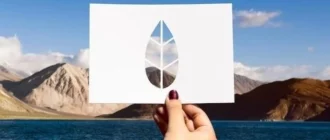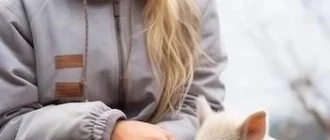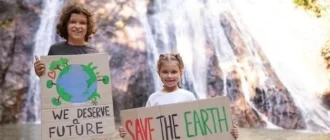As an avid hiker and nature enthusiast, Ive spent countless hours observing the natural world. Over the past few years, Ive witnessed firsthand the alarming ways in which climate change is impacting animals, even in my own backyard.
The Shifting Seasons and Confused Wildlife
I remember a time when the seasons followed a predictable pattern. Spring arrived with a burst of color and birdsong, followed by the lazy warmth of summer, the crisp decline of autumn, and finally, the quiet blanket of winter. However, in recent years, these patterns have become increasingly erratic.
Last spring, I was surprised to find a robins nest filled with chicks in early March, weeks ahead of their usual schedule. The unseasonably warm weather had tricked them into nesting early, only to be hit by a late frost that threatened the survival of their young. Sadly, this is becoming a common occurrence, as climate change disrupts the delicate balance of nature.
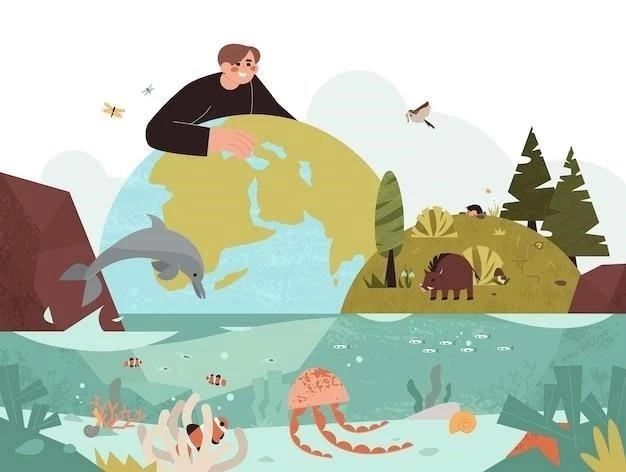
Struggling to Adapt⁚ The Plight of the Snowshoe Hare
One of the most poignant examples of climate changes impact on animals is the plight of the snowshoe hare. These remarkable creatures have evolved to thrive in snowy environments, their white winter coats providing camouflage against predators.
However, as winters become shorter and milder, the hares are often left vulnerable, their white coats standing out against the brown landscape. Ive personally observed an increase in sightings of hares caught in this predicament, their once-effective camouflage now a liability.
The Domino Effect⁚ Disruptions to the Food Chain
The impact of climate change on animals extends far beyond individual species. Its causing a ripple effect throughout entire ecosystems, disrupting delicate food chains that have evolved over millennia.
During a recent trip to the Rocky Mountains, I noticed a decline in the once-abundant population of pikas, small mammals that rely on alpine meadows for their survival. As temperatures rise, these meadows are shrinking, forcing the pikas to compete for dwindling resources. This, in turn, impacts predators like weasels and owls that depend on pikas for food.
A Call to Action⁚ Protecting Our Planets Creatures
My experiences have instilled in me a deep sense of urgency. Climate change is not a distant threat; its a present reality that is already impacting the lives of animals around the world, including those we cherish in our own backyards.
We must all do our part to reduce our carbon footprint and advocate for policies that address this global crisis. The future of our planets biodiversity depends on it.
The Silent Exodus⁚ Witnessing Habitat Shifts
One of the most subtle yet profound impacts Ive observed is the gradual shift in animal habitats. Its not always a mass exodus, but a slow, almost imperceptible movement as species adjust to the changing climate.
For years, Ive enjoyed watching a colony of vibrant Baltimore Orioles build their intricate nests near my favorite hiking trail. But last summer, I noticed their absence. After speaking with local birdwatchers, I learned that the Orioles, along with several other bird species, had been spotted nesting further north, seeking cooler temperatures and shifting their range in response to the warming climate. It was a stark reminder that climate change is redrawing the map of life as we know it.
A Glimmer of Hope⁚ Witnessing Resilience
Despite the challenges, Ive also been fortunate to witness moments of resilience and adaptation in the animal kingdom.
Last fall, while exploring a local wetland, I stumbled upon a family of river otters. These playful creatures had adapted to the increasingly dry conditions by digging deeper burrows near the receding waterline. It was a testament to their adaptability and a reminder that even in the face of adversity, life finds a way.
However, this resilience should not breed complacency. We cannot rely on adaptation alone to save our planets diverse wildlife. We must act now to mitigate the impacts of climate change and preserve the delicate balance of nature for generations to come.
The Unseen Struggle⁚ Witnessing the Effects of Climate Stress
While some adaptations are visible, others remain hidden from plain sight. Ive noticed a decline in the overall health and vitality of some animal populations. A few years ago, I volunteered with a local wildlife rehabilitation center, caring for animals injured or orphaned in the wild.
I vividly recall caring for a young fawn, barely a few weeks old, found weak and emaciated near a dried-up watering hole. The veterinarian explained that the prolonged drought, exacerbated by climate change, had made it difficult for the fawns mother to produce enough milk. Sadly, despite our best efforts, the fawn didnt survive. It was a heartbreaking experience that highlighted the often unseen toll climate change takes on vulnerable animals.
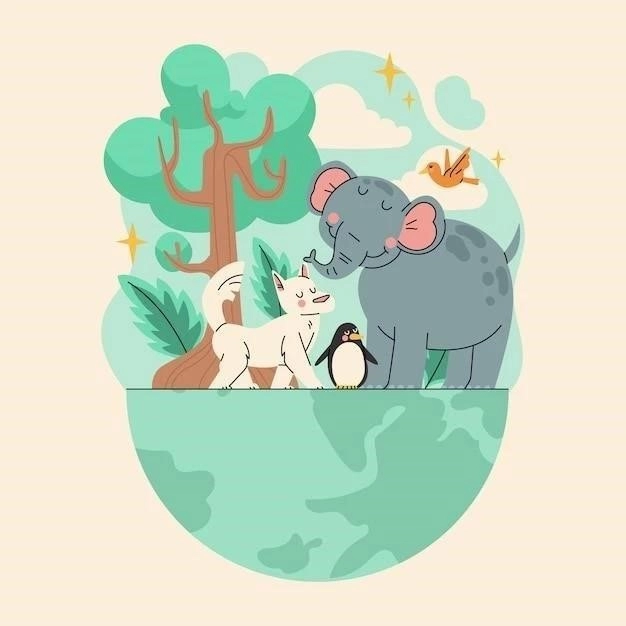
A Shared Responsibility⁚ Turning Observation into Action
My experiences havent just filled me with concern; theyve ignited a sense of responsibility. Ive begun making changes in my own life, from reducing my carbon footprint to supporting organizations dedicated to conservation and climate action.
Ive also started sharing my observations and stories with others, hoping to raise awareness and inspire action. I recently joined a local environmental group, and weve been organizing nature walks and educational workshops to engage our community in protecting our local ecosystems. Its been incredibly rewarding to connect with others who share my passion for preserving the natural world;
The fight against climate change is a collective effort, and it requires all of us to do our part. By paying attention to the subtle and not-so-subtle changes happening around us, we can become better stewards of the planet and ensure a healthier future for all living creatures, including ourselves.
I remember a particularly scorching summer a few years back. I was living in Chicago at the time, and the city was experiencing a record-breaking heatwave. One sweltering afternoon, while walking my dog, Sparky, I noticed a group of pigeons huddled under a park bench, panting heavily. Sparky, usually eager to chase anything that moved, seemed unusually lethargic, his tongue lolling out as he struggled to catch his breath.
It was a stark reminder that even urban wildlife, often perceived as resilient to human-dominated landscapes, are vulnerable to the impacts of extreme heat brought on by climate change. I made sure to keep Sparky well-hydrated and limited our walks to the cooler hours of the day. I even started carrying a small spray bottle to mist the pigeons and squirrels I encountered, offering a bit of relief from the oppressive heat.
Finding Hope in Collective Action
Its easy to feel overwhelmed by the sheer scale of climate change, but I find hope in witnessing the growing movement of individuals and communities taking action. Ive been inspired by young climate activists like Greta Thunberg, who are raising their voices and demanding change from world leaders. Ive also been heartened by the increasing number of businesses and organizations committing to sustainable practices and reducing their carbon footprints.
On a local level, Ive joined a community garden initiative in my neighborhood. Its been a wonderful way to connect with my neighbors, learn about sustainable gardening practices, and contribute to a greener, more resilient city. We even set aside a portion of our harvest to donate to a local food bank, addressing food insecurity while promoting sustainable living.
The fight against climate change is a marathon, not a sprint. There will be setbacks and challenges along the way, but Im confident that by working together, we can create a healthier, more sustainable future for all creatures, great and small.
Ive also noticed changes closer to home, in my own backyard. For years, Ive kept beehives, fascinated by the intricate dance of these pollinators. But the past few summers have been tough. The once-predictable bloom times of wildflowers and trees, crucial for nectar and pollen collection, have become erratic. Ive had to supplement my bees diet with sugar water more often, a stopgap measure that highlights the disruption of natural cycles.
Its not just the bees feeling the heat. Ive noticed a decline in the number of fireflies illuminating the summer nights. These enchanting creatures, whose populations are indicators of a healthy ecosystem, are struggling as their wetland habitats dry up and pesticide use disrupts their life cycle. Its a sad reminder that even the smallest creatures play a vital role in the web of life, and their disappearance has ripple effects throughout the ecosystem.
Despite the challenges, I find hope in connecting with others who share my concerns. I recently joined a local chapter of the Audubon Society, and its been heartening to learn from experienced birders and participate in citizen science projects. Last month, we participated in the Christmas Bird Count, a century-old tradition where volunteers across the country tally bird sightings. The data collected helps scientists track bird populations and understand how climate change is impacting their distribution and abundance. Its a tangible way to contribute to scientific research and conservation efforts.
The fight against climate change is a multifaceted challenge, but I believe that through observation, education, and collective action, we can make a difference. Every step we take, from reducing our own carbon footprint to supporting organizations dedicated to environmental protection, brings us closer to a healthier, more sustainable future for all creatures, including ourselves.

